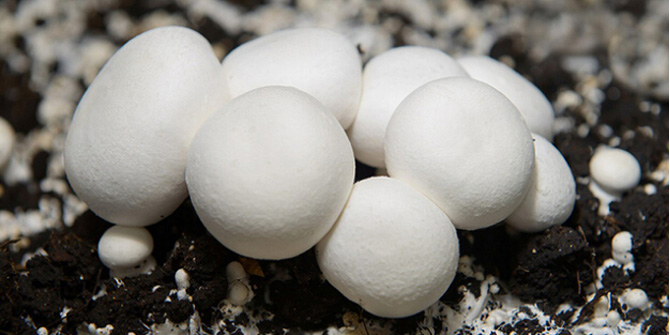Five Things To Note When Growing Edible Fungi In Autumn

1. Ferment the base material, paying attention to uniformity
Fermented materials, in addition to species such as Agaricus bisporus and Coprinus comatus that must be sown with fermented materials, oyster mushrooms, shimeji mushrooms, etc. are also used. Years of practice and research have shown that one of the biggest problems in the cultivation of fermentation materials is uneven fermentation, different degrees of maturity, different moisture content, and even anaerobic fermentation and other abnormal conditions, which can easily lead to unsatisfactory cultivation results. Therefore, attention should be paid to the principle of turning the pile: uniform inside and outside, uniform top and bottom, and appropriate water should be added each time the pile is turned according to the fermentation temperature and weather conditions; the secondary fermentation of Agaricus bisporus must meet the temperature requirements and maintain the specified time, otherwise, it is very likely that a large number of ghost caps will occur, resulting in production failure.
2. The temperature is still high, pay attention to pests
During the mixing or fermentation of the base material, mushroom mosquitoes and mushroom flies come to the smell and lay eggs near the material, so that the raw material is sown with eggs, and the fermented material is sown with live insects in the bag or on the shelf. It will cause harm during the fungus period and lead to "fungus withdrawal". That is, the mycelium is dense at the beginning, and then the mycelium becomes less and less until the fungus is completely withdrawn. Therefore, clean the surrounding environment before mixing the material and spray the liquid medicine once. During the mixing or bagging period, if there are mushroom mosquitoes and mushroom flies, spray the medicine to drive them away and complete the sowing as soon as possible.
3. Humidity is high, pay attention to prevention of weeds
In autumn production, the relative humidity of the air and the moisture on the ground are both high. If the fungus is grown in the greenhouse, the probability of contamination is quite high when it encounters high temperature or poor ventilation.
Therefore, the fungus shed should be strictly disinfected before it is put into use. After cleaning, spray the medicine, then remove the straw thatch and dry the shed. Under high temperature conditions, the medicine can fully play its role. After 2 days, cover the straw thatch to cool down, sprinkle a layer of lime powder on the ground, and then move the sown fungus bags in to enter the fungus period. During the fungus period, the medicine should be sprayed for prevention, and the selected medicine should be harmless and safe for people.
4. Strictly control and pay attention to removing impurities
During the germ growth period, strict removal of impurities is carried out. Once contamination occurs, the contaminated germ bag is immediately removed from the shed and treated with medication to prevent the spread.
5. Fast growth, pay attention to early harvesting
The temperature in autumn is very suitable for mushroom production, and the fruiting body occurs quickly. Due to the fast growth, it should be harvested in time. The principle is to harvest early rather than late. It is better to reduce the yield by harvesting early than to age it by harvesting late. Aged mushrooms not only have a poor taste, but also waste a lot of base material nutrients. Moreover, varieties such as Coprinus comatus will open their umbrellas and dissolve automatically once harvested late, losing their commercial value.

(1)(1).jpg)
 CONTACT
CONTACT